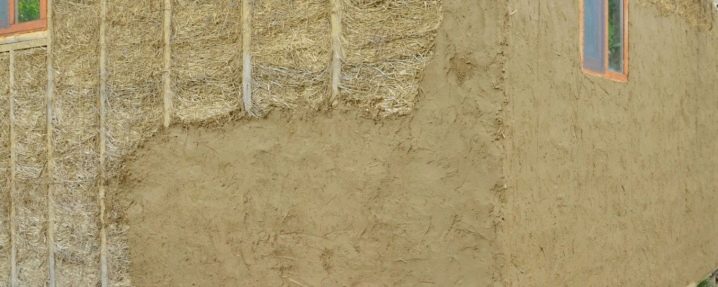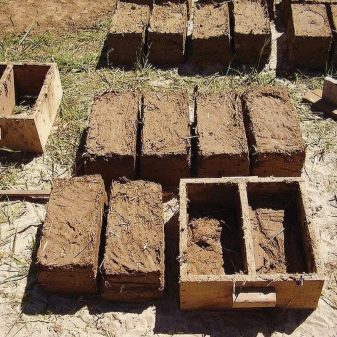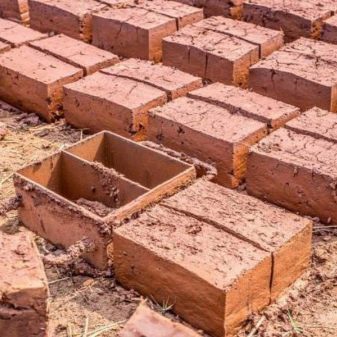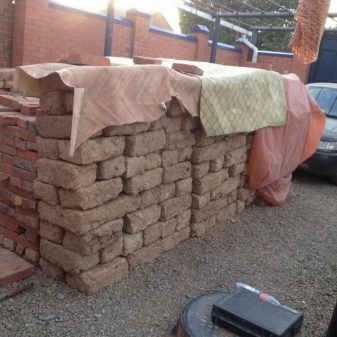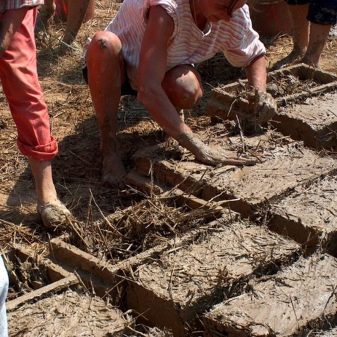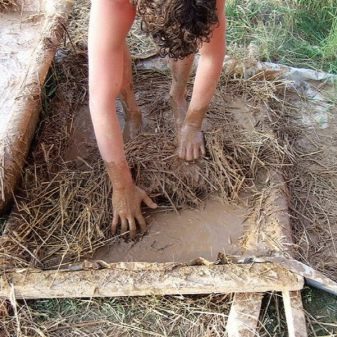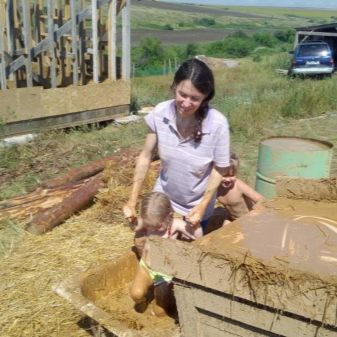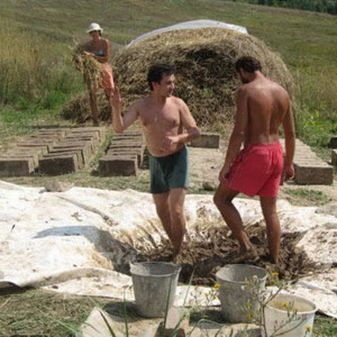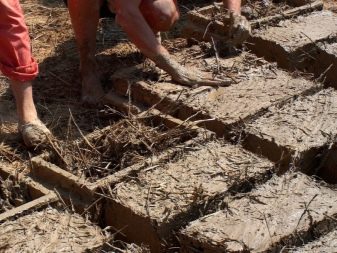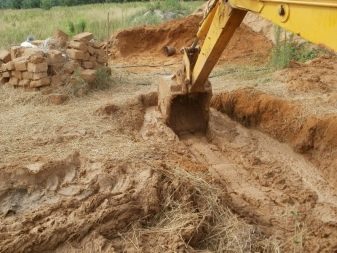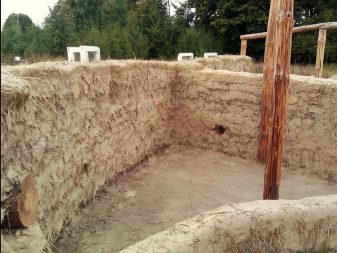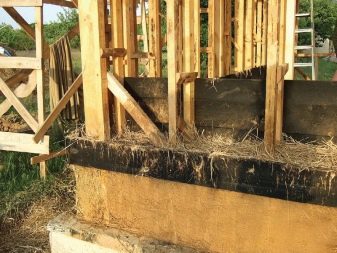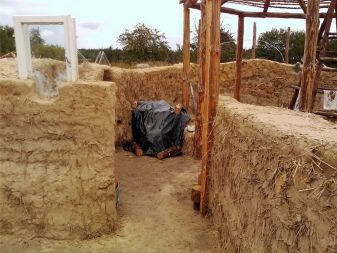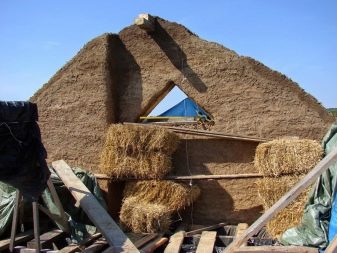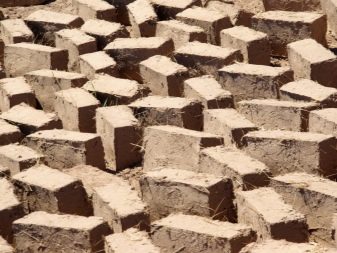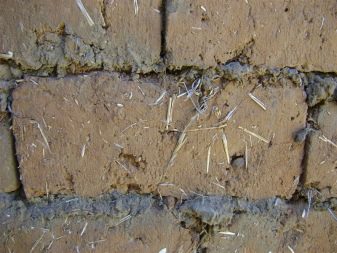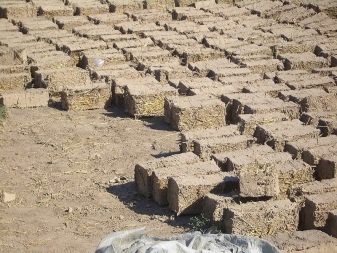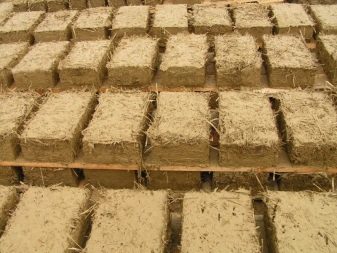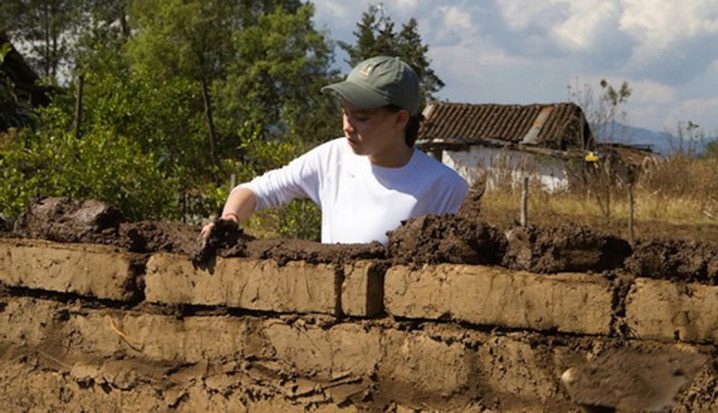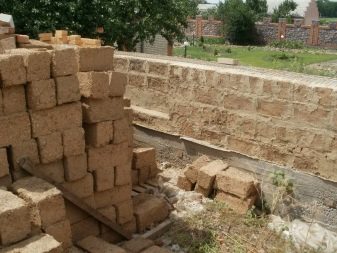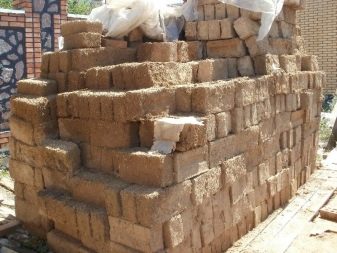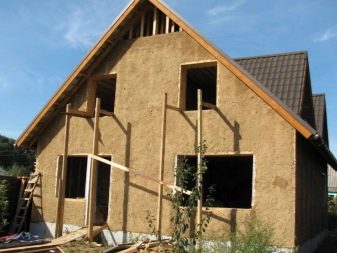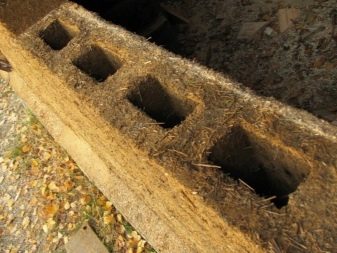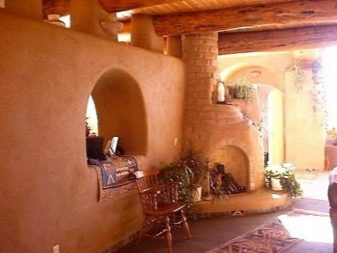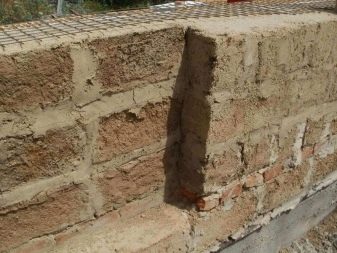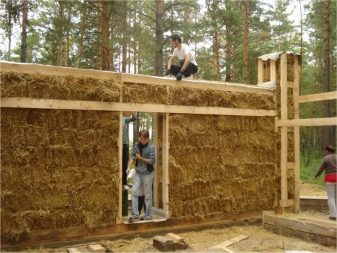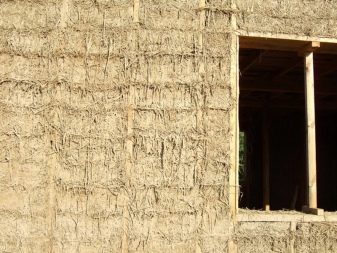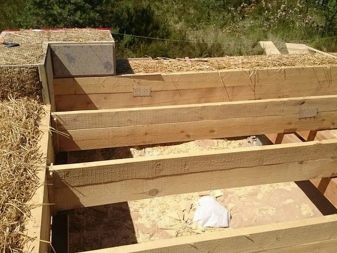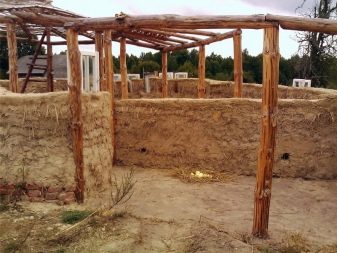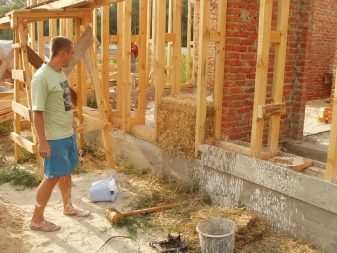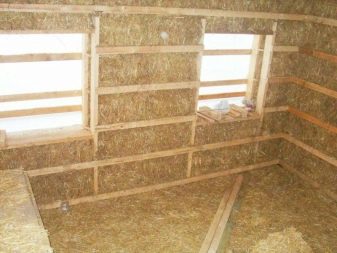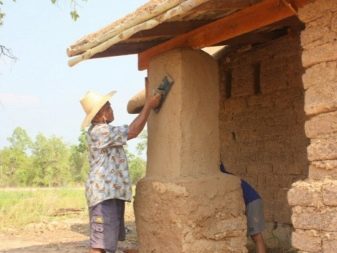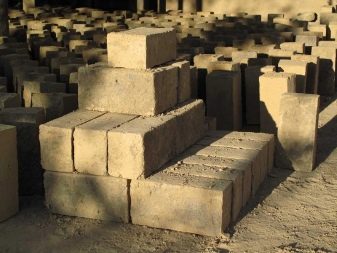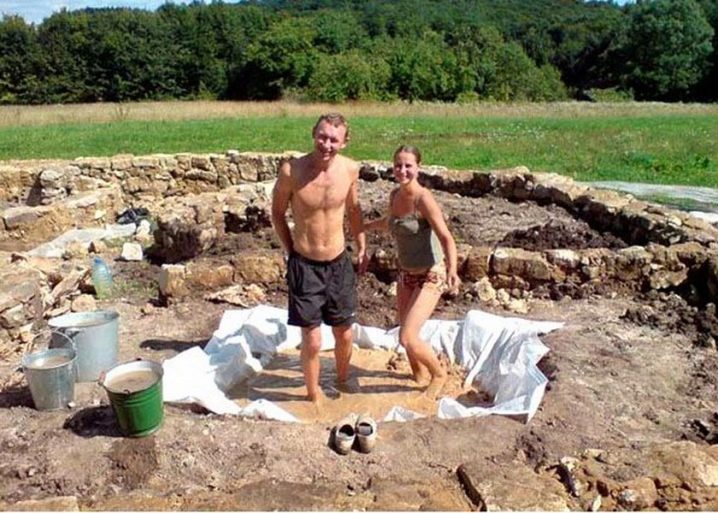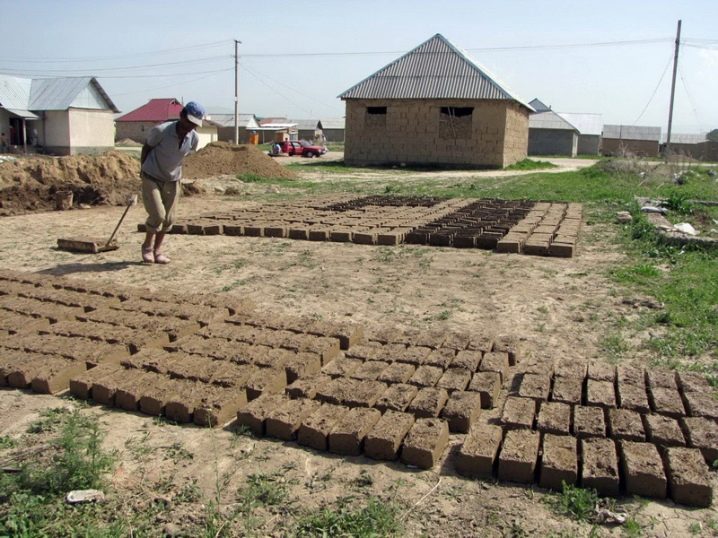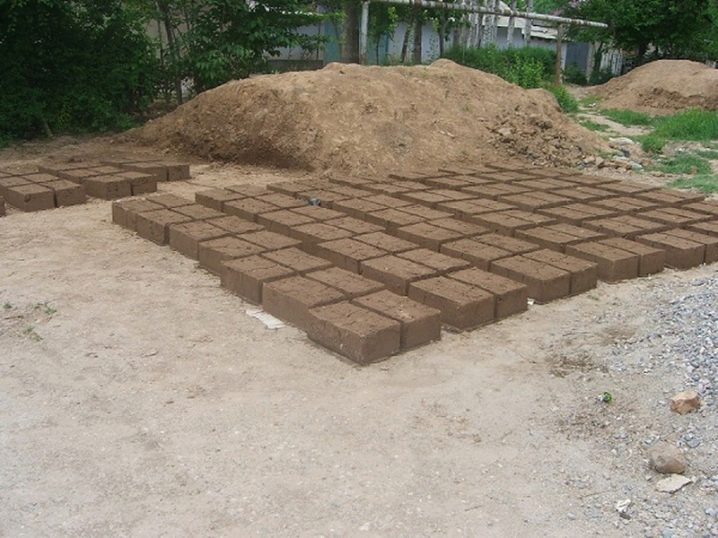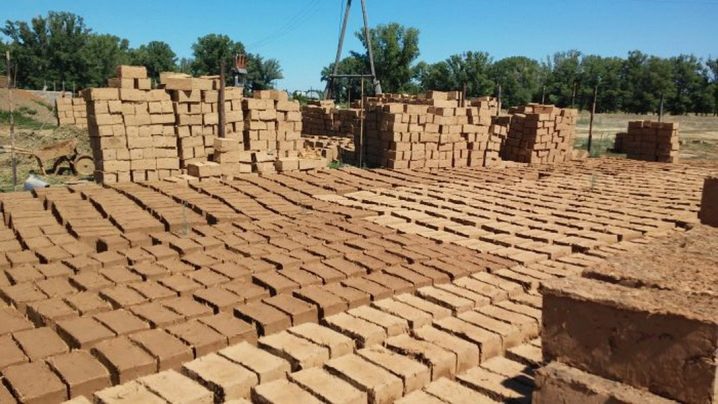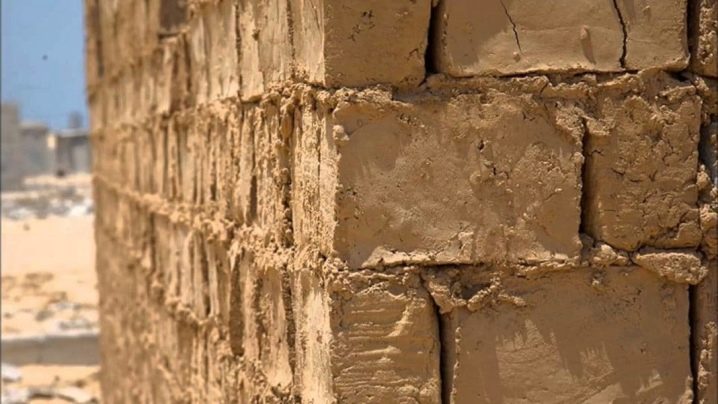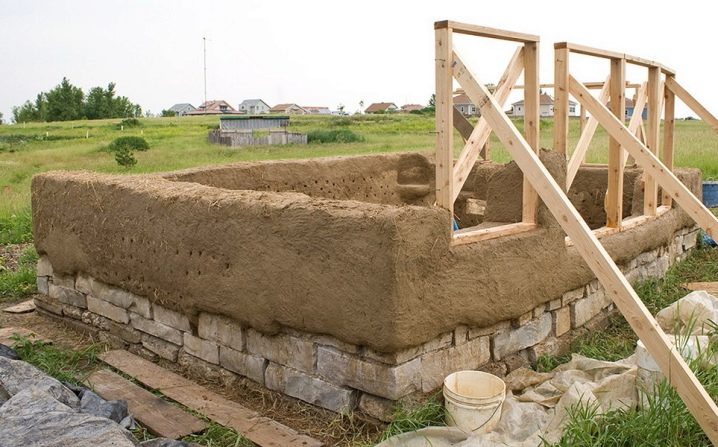Saman: characteristic, production and scope
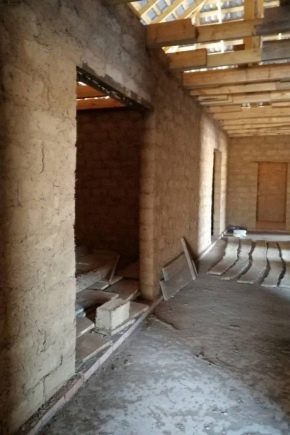
The durability of the building depends on all the building materials used, without exception, but the wall material should be chosen most carefully, because even with an ideal site for construction, the poor choice of this component will make the building decay pretty quickly. Material for the manufacture of walls can greatly influence the cost of the entire project, in addition, it may depend on some basic characteristics - for example, the thermal conductivity of the building. If we talk about proven classics, then perhaps there is no more practical material than adobe.
Characteristic
Samana is a brick of clay and straw with the addition of water, but there are no exact proportions, as well as a complete set of components - the composition of an artificial stone may differ significantly depending on what characteristics are required of it.
The main ingredient of any adobe was and is clay, preference is given to varieties with an average fat content. The viscosity of the mass can be different, therefore, if necessary, add a certain amount of water in order to knead the composition was easier. Traditionally, a filler was also used, which increased the strength of dried clay, fastening it, and somewhat improved the thermal conductivity. Historically, fibrous plants and even manure were used as such a component, but today, as such, they often use finely chopped straw or chaff.
Of course, the above ingredients were all limited in the old days, and today, in an age of developed technologies, The composition of adobe may contain various additives that significantly improve certain qualities of such a brick:
- crushed stone, sand or expanded clay in half with clay allow drying construction materials to avoid strong shrinkage, keeping the given dimensions and shape;
- casein and bone glue, as well as archaic slurry or modern liquid glass, can be used instead of water to give uncured adobe blocks any desired shape without spreading;
- lime and cement are known for their ability to quickly release moisture into the environment, because they are added to the recipe so that the bricks are more likely to dry and be moisture resistant;
- fibrous cellulose, chopped straw, wood chips, or the same manure allow saman to also be relatively elastic, which increases the resistance of the material to temperature extremes and compression or stretching.
Moreover, in some cases, add more complex additives of synthetic origin - in particular, to increase the protection of building material from the effects of living organisms. However, even in the classical form, adobe has enjoyed tremendous success over many thousands of years.
The exact date of discovery of adobe is unknown, but scientists say that houses were built from it six thousand years ago. In those times, it was almost the only way out for residents of the steppe and desert zones, where even more traditional wood or natural stone was almost never encountered.As it happens in any epoch and in any state, building a house was also costly, because the poor population had no choice but to think of a way of building what was under their feet and was not particularly needed. Ancient Egypt is considered the birthplace of the first adobe, and from there such material has spread to many regions with the described climate conditions.
Modern adobe brick can have different characteristics, which strongly depend on its constituent components and their proportions, but on average, you should get something like this:
- density comparable to conventional brick - at the level of 1500-1900 kg per cubic meter;
- thermal conductivity depends, first of all, on the amount of straw used (the more of it, the better the walls retain heat), but in general, adobe according to this indicator is twice as good as a simple brick - 0.1-0.4 W / (m * hail);
- in terms of resistance to compression, adobe blocks very much resemble a modern foam concrete block - in both cases, this indicator ranges from 10–50 kg per square centimeter.
Advantages and disadvantages
On the one hand, adobe has been around for thousands of years.but he not only did not lose relevance, but even acquired it in those regions where wood was previously reigning as building material. On the other hand, despite all the improvements in the composition and characteristics, such a block is not only not considered to be a leader in the market of building materials, but can also be consciously rejected as an option in favor of this or alternative. All this indicates that adobe has its advantages and disadvantages, which should be considered before building material is purchased.
Positive properties.
- Saman has always been in the category of the cheapest building materials, and today, even with various additives, it remains perhaps the most affordable. Moreover, in many cases, the owner can even make it on his own - this requires not so much money as simple knowledge and aspiration.
- According to the main characteristics, adobe will satisfy most of the potential owners of the building, because it not only keeps heat well, but also has excellent sound insulation properties. Moreover, the adobe walls also absorb excess moisture, participating in the normalization of the atmosphere in the house.
- Classic adobe is completely harmless - it is as natural a product as possible. At the same time, it is predictable, it does not burn at all in the fire.
Disadvantages.
- A cob wall requires careful plastering to protect it from moisture. By itself, such a brick has a huge hygroscopicity, and this at least greatly increases the weight of the structure and can lead to its deformation.
- Adobe blocks dry rather quickly where they were invented - in hot countries, but in our conditions we have to wait a long time until the brick is completely dry and strong. Throughout this time, building materials should be carefully protected from moisture, and indeed it requires special storage until such time as it is covered with a protective finish. Such demandingness leads to the fact that buildings from adobe can not always be built, and in the winter such a task looks unreal at all.
- Classic adobe, being completely natural, does not carry any danger not only for people, but also for household pests - from insects to rodents. Moreover, vegetable blotches can also attract such uninvited guests, and the voids remaining from them can be used as housing.In modern conditions, to prevent such phenomena, special chemical additives or proper finishing are used, but then such material advantages as environmental friendliness and partially cheapness are lost.
- Adobe requires some time for sufficient shrinkage to occur and the wall to gain strength. For this reason, the time of erection of buildings from samana always exceed the same time frame for building a building of brick.
Kinds
The ingredients traditionally included in adobe blocks can be used in different proportions and subject to different masonry technologies. For this reason, it is customary to divide adobe into two main varieties - the so-called light and heavy.
Although adobe is seen by most people as a brick or block of any other form, a light variety very rarely has this appearance. The fact is that for the manufacture of light adobe a very small amount of clay is used - usually its share is not more than 10%, whereas the main role is played by the filler. The resulting mass has considerable fluidity and low ductility, therefore it requires a more solid base of another material.Usually lightweight adobe or is a kind of coating for the batten, which is installed next to the frame wall, or filler between two such walls at once.
It turns out that it is impossible to build a house entirely from light adobe - it will definitely complement another building material, but in this you can also find advantages. Thus, the building retains all the advantages of its adobe counterparts (except, probably, cheapness), but it is being built much faster and somewhat easier. The disadvantages of this solution are that the material for the frame can cost considerably more than similar in volume adobe blocks, and wood is often used as a batten, with all its drawbacks in the form of price, flammability, exposure to moisture and pests.
The fact that for most people is “ordinary” adobe blocks is the so-called heavy adobe. The composition of such a brick has already been considered above, and the advantages of its use are obvious - the building is much stronger and more reliable, and you can finish the decoration almost immediately after the wall has been erected, because adobe literally requires that it be protected from the atmosphere .A huge disadvantage of this type of material is its susceptibility to the damaging effects of water - it is she who is the main enemy of adobe buildings. Although water is used in the production of adobe, it is always necessary to keep the finished material from moisture, starting with the drying stage and ending with the construction, finishing and living in the finished house.
Manufacturing technology
It is possible to save a lot on the construction of a house of adobe, given that you can make such a brick with your own hands at home from what is literally under your feet. The main necessary ingredient is medium-fat clay. Such a mass is quite well molded and does not allow water to pass, so they are usually looking for it near ponds or in wetlands. A layer of the necessary material may not be located on the surface, but rather close to it - this is indicated by the high level of water in the well or moisture-loving plants (mint, sedge) growing without watering far from water.
If the clay is too oily, it can be slightly “improved” with the help of sand - on average, it should be added in proportions of 1: 7. It is advisable not to use river sand because of the likely presence of silt in it, but large mountain varieties will do.
Because of the demands on the climate, it is necessary to engage in the harvesting of adobe during the warm season.However, clay is usually harvested much earlier - from the previous autumn. Raw materials are dumped by a large slide (but not more than a meter high) and covered with a thick layer of straw about 10 cm thick. In this form, the clay gets wet during the autumn and winter under rains and freezes, making it plastic. With the onset of spring, the straw is removed, and the clay is covered with polyethylene, pressing the edges with stones - thanks to this, the heap will thaw out faster, but will not give up all the moisture to the atmosphere, therefore no crust forms on it.
As for the straw needed for the production of blocks, it is suitable both fresh and last year. The only principal requirement is the quality of the raw material - it should not have any damage due to improper storage. In some cases, you can do without this ingredient, but then you need to replace it with any dry grass with strong fibers.
As we have already understood, dry and warm weather is extremely important for the production of adobe and construction with its use, therefore the formation of blocks must be started with the first steady warming in order to complete the house by the onset of deep autumn.For the production of adobe, it is advisable to choose a site next to the planned construction - ready-made blocks weigh a lot, so carrying them somewhere far away will be problematic. To maintain the correct shape of the bricks, the site must be flat, and so that the grass and garbage do not stick to them, they are removed in advance. It should also provide a drain for rainwater - it is better if the area is slightly elevated above the surrounding area. The entire surface is covered with a straw chop. It's okay, even if it sticks to the blocks, because it is still part of them.
Before kneading the clay, the pad is also covered with a thick waterproof fabric. In the center of the improvised shop piled up prepared clay, watching its uniformity without large lumps. In the center of the heap is a small hole for water, there it is poured as much as is required to give the mass plasticity.
The easiest way to knead clay is with your feet - so much effort is not so energy consuming. If you need to add sand to the mass to reduce the fat content, this is already done at the stage of mixing clay with water,straw is added after the above ingredients are mixed. Straw before being added to the mixture is pre-soaked in water. Its proportions are usually about 15 kg per cubic meter of clay, although they, as we have already mentioned, depend on the needs and capabilities of the host. The resulting mass should be kneaded until it becomes completely homogeneous. Be prepared that it will take time. The result is the very light adobe that is raked into a pile and left for two or three days.
At this time it is worth taking care of the search or self-production of forms for blocks. They are usually just a box without a bottom, a kind of "contour" for future bricks. It is better to determine the size of someone who will plan and build a building, but this largely depends on the climate - massive blocks predictably dry longer, and where it is often cool and rainy even in summer, they should have the minimum possible size. Keep in mind that drying adobe is subject to shrinkage by 10-15%, and in some cases even more, so make blocks with a certain size margin.For more convenience, the form for samana is encased from the inside with polyethylene, and from the outside handles are attached to it.
Bookmark future blocks produced on level ground, open to the sun's rays. Forms are installed on the ground, pre-leveled, cleaned and covered according to the described scheme, and the mixed and settled saman is brought up in any way and poured into the boxes, carefully ramming. The surpluses that do not fit in the form are carefully removed with the help of a board placed on the opposite sides of the box, and then the form is simply lifted, leaving the adobe in place, and the procedure is repeated in the next section.
Wet bricks need to pierce in the center in two or three places with a wire about a millimeter thick so that the shrinkage during the drying process does not lead to complete deformation of the block. To protect against precipitation, molded pieces of mass are covered with waterproof materials - roofing felt or tarpaulin, which also contribute to the uniformity of drying. In this form, adobe is dried for 1.5 days, then it is turned over on its side and is given another day of time. Then you need to move it under a canopy, laid out in the form of a well for the final drying, which will be delayed for another two weeks.At this stage, it is better to install bricks on top of wooden flooring or pallets - this will help remove excess moisture.
After that, it is time to construct a building from finished blocks, but you can check whether everything is done correctly. With the observed technology adobe bricks can withstand a fall from a height of two meters (at least to the ground) without any deformations. In addition, high-quality adobe is capable of not losing its shape, having lain in water for two days.
Application
Although adobe bricks can withstand two days in the water, such tests are very harmful for the durability of the house, because the laying is carried out over a strip foundation with a height of at least half a meter, equipped with waterproofing from roofing material in several layers. The thickness of the tape must be at least 20 cm higher than the planned thickness of the masonry - this margin is intended for a thick protective layer of plaster or other finishing.
The recommended thickness of adobe walls is from 30 cm for internal partitions and from 50 cm for bearing walls. Even at the construction stage, adobe still continues to dry, so no more than two rows are put on the day. If necessary, the block can be cut with an ax.Masonry is carried out on mortar based on clay and sand.
Works are performed only in dry and sunny weather., with the first signs of rain, work is urgently stopped and the walls are tightly covered with polyethylene. For finishing use any waterproof and vapor-permeable plaster, except for cement, which badly adheres to clay. The finish layer should be thick - at least 5 cm, even 10 cm can be used. As jumpers over various openings, boards from 5 cm thick are used, which are necessarily treated with waterproofing compounds. If possible, they make the roof hanging down at least half a meter - it helps to protect adobe walls from atmospheric precipitation once again.
How to make a block with your own hands, see the next video.
